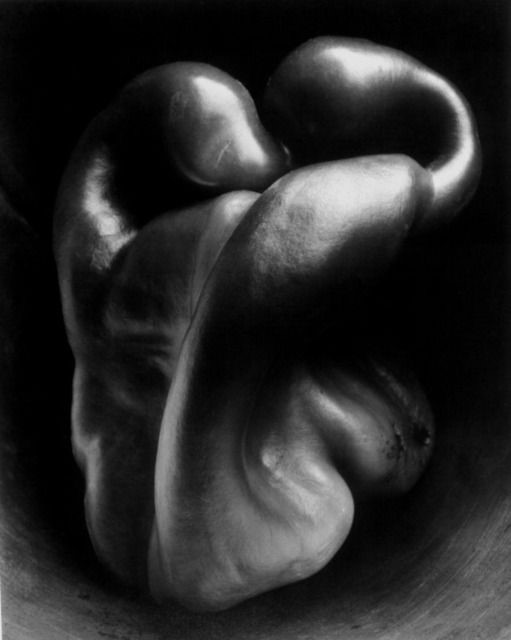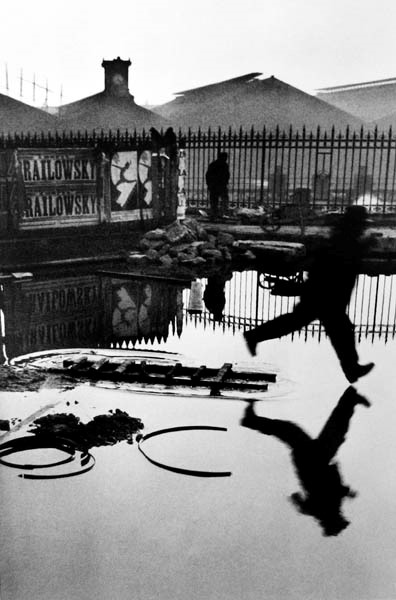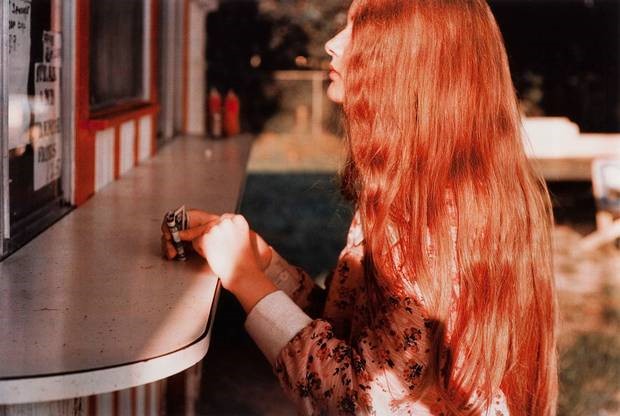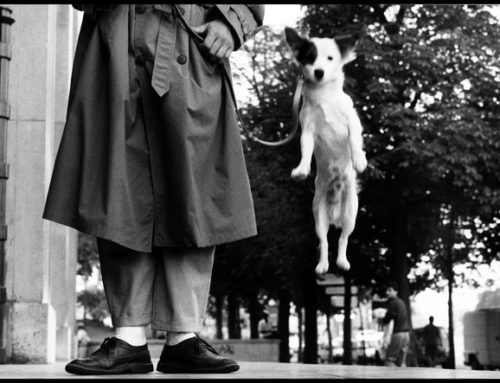In the summer of 1930 a photographer named Edward Weston expanded on a theme of taking isolated pictures of shells, fruits, heads of lettuce, all manner of organic material and then began to focus on nothing but peppers. I first saw Pepper No. 30 in a book at the Tattered Cover Bookstore in Denver. At that point, I really liked Ansel Adams and really didn’t appreciate many other photographers especially not those that focused on still-life. But as soon as I saw this photo I knew that I had been missing something and whatever it was, had just found it. The pepper itself is remarkable. If you just happened upon it at Safeway you might even pick it up and study it yourself. What Weston has done though is capture the beauty of the pepper and its imperfections. There is even a sense that it may be triumphantly alive or even sentient. He has also used slightly harsh overhead lighting and chosen a funnel as a background, which highlights the bottom for contrast. In doing so he has turned the pepper into something different from just beautiful. It has been made a work of art. 
At the time that Weston took the photo it was not agreed on that photography was actually art. He forcefully denied the possibility of the pepper symbolizing anything at all, but in my opinion he doesn’t really have choice because that is what art does. It always means something more than just the thing sitting in the frame. It might just be about composition, an odd juxtaposition of things or people, or it could actually say something to you about a cause or provoke a specific emotion. The point is, that on occasion a photograph will speak to you in a way that most others don’t. And it is both terrifying because you know (think) you’ll never make a photograph half as good as this and exhilarating because you have a more complete understanding of the potential held in your craft.
This “muse” photo will most likely change as you change overtime. After Pepper No. 30 came Henri Cartier-Bresson’s Behind the Gare St Lazare taken in 1932. Its part of the street photography canon but it is also a compositionally perfect photograph. I would define this by saying that if you take any element out of the photo, then whole thing falls apart. The fence and the water serve as a backdrop to a man that is doing his best to jump from a ladder onto the safety of dry ground. Notice that he almost seems to pop out of the water and his shadow seems to be more a part of the background than he is. You might also notice a hidden uncanny coincidence in the advertisement behind him. Concern for the man causes suspense because it looks like he is going to miss his goal, and land right in the water, soaking his shoe and making him late for work. But the picture is taken at the decisive moment before this so we don’t know what happens and are intrigued. Cartier-Bresson pioneered this decisive moment and many of his photos are about this and only this. 
Around the same time I looked at a monograph by a photographer named William Eggleston and hated it. A few years later I took another look because a photographer friend of mine had recommended him to me. And flipping through the first few pages I still didn’t like it, and then I saw this image.  I now understood that Eggleston’s photography compositionally speaking wasn’t necessarily about the subject, he is making abstractions about color and shape and using reality to paint onto a film canvas. The subjects in the frame are almost secondary. He also breaks photographic laws more so than most famous photographers. Note how this frame is divided into one third and then another whole two thirds. Most photographers would have taken a step back, put the red hair in the middle of the frame to occupy the middle third and made a pretty good photo. Eggleston by breaking this convention creates something new, but it only works because the light shining on the color of her hair and dress has added some weight against the shadow of the counter. This also serves to add some humanity to the woman at the counter, this photo would have been about the red hair if he would of taken that step back, but now you can see her money out and her patient anticipation of whatever it is she’s buying.
I now understood that Eggleston’s photography compositionally speaking wasn’t necessarily about the subject, he is making abstractions about color and shape and using reality to paint onto a film canvas. The subjects in the frame are almost secondary. He also breaks photographic laws more so than most famous photographers. Note how this frame is divided into one third and then another whole two thirds. Most photographers would have taken a step back, put the red hair in the middle of the frame to occupy the middle third and made a pretty good photo. Eggleston by breaking this convention creates something new, but it only works because the light shining on the color of her hair and dress has added some weight against the shadow of the counter. This also serves to add some humanity to the woman at the counter, this photo would have been about the red hair if he would of taken that step back, but now you can see her money out and her patient anticipation of whatever it is she’s buying.
I happened to pick three photos from three “masters” of the medium. But this is not necessary. These life-changing photos can come from anywhere. Instagram, Pinterest, a Coffee-Shop Gallery, you can even be so bold as to chose one of your own photos. Just be open to photos changing you and your photography. A muse is a wonderful thing to have.




